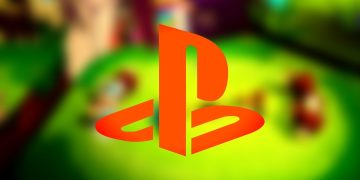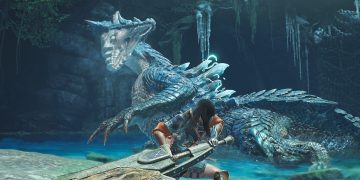I initially stumbled onto Horizon: Zero Dawn during the unexpected quiet of the COVID years. Sony had generously offered several titles for free, and the “Complete” edition of Horizon caught my eye, bundled with its expansive DLC, “The Frozen Wilds.” Intrigued, I decided to dive in, only to find myself completely enthralled with Aloy and her breathtaking post-apocalyptic world filled with robotic wildlife. Having spent over 250 hours exploring the vast landscapes of Breath of the Wild, I couldn’t help but describe Horizon as my “Robot Dinosaur Zelda.” It’s essentially that: battling mechanical creatures with your trusty bow and arrow across an expansive open world. The captivating sci-fi context and intricate backstory quickly turned me into a huge fan of Aloy. So invested was I in her journey that, after playing the sequel, Forbidden West, on my PS4, I decided to upgrade to a PS5 just to experience the console-exclusive expansion, “The Burning Shores” — and I have no regrets.
In short, I absolutely adore Horizon.
Given my affection for the franchise, the announcement of a LEGO adaptation of the first game struck me as odd, especially since it’s a Sony-published title now available on Switch. Having played LEGO Horizon Adventures, the quirkiness remains. It doesn’t quite hit the mark of what I love about my Robot Dinosaur Zelda games. The gameplay loop feels a bit repetitive, and it doesn’t deliver the combat precision that defines the original Sony duology. It’s almost like this game is grappling for its own unique identity.
On a brighter note, much of the original voice cast is onboard, with talents like Ashly Burch (Aloy), JB Blanc (Rost), John Macmillan (Varl), and John Hopkins (Erend) making a return. They’re voicing more whimsical, self-aware versions of their characters, which I found charming and often humorous. I must admit a slight pang of disappointment at Guerilla’s choice of replacement for the late, incomparable Lance Reddick (Sylens), who sounds markedly different. It leaves me apprehensive about how they’ll portray Sylens in Horizon 3. Anyway, LEGO Horizon Adventures loosely adapts Zero Dawn’s storyline, skipping entirely over the pivotal “Zero Dawn” part, which happens to be my favorite section.
In this game, you guide a miniature LEGO Aloy, equipped with her bow, from an overhead perspective with a fixed camera angle. This setup suits the vibrant, detailed platforming sections well enough, but it’s a hindrance during combat sequences. Battles occur in isolated arenas, typically filled with multiple enemy machines and occasionally humans, like the Shadow Carja. Aloy can cleverly camouflage herself in orange grass (where she literally becomes orange grass—a neat touch), but her stealth cover vanishes the moment she starts attacking. The lack of camera movement means you’re never entirely aware of the battlefield, which I found frustrating.
By holding the L button, you can activate Aloy’s Focus to identify weak points on machines. While these points tend to mimic their original counterparts, aiming here lacks precision, and there’s no slow-motion effect when aiming — a feature I miss from the PlayStation games. Consequently, you seldom dislodge parts from machines. Instead of special arrows that could help you deal more damage or remove parts more efficiently, you’re armed with “special weapons” that have limited ammo and “gadgets” with limited uses for combat aid.
These special weapons are mostly elemental bows, while gadgets range from flame-jet boots to energy shields, a Tripcaster, and the melee “Brick Separator,” among others. While these add some variety, none offer the satisfaction of the core Horizon gameplay I love. LEGO Horizon Adventures lacks strategic depth; too often, I found myself fleeing foes and taking opportunistic shots when I could.
Collecting studs from environmental destruction, chests, and machine victories becomes part of the routine. These studs are then used in your base camp, Mother’s Heart — by far the game’s most peculiar feature.
Mother’s Heart, where Aloy begins her story in Horizon: Zero Dawn, is transformed from a traditional village into a playground. Here, you can customize buildings, purchase costumes, check quest lists, enhance abilities, and erect structures. Additional areas unlock as you finish chapters, allowing even more construction. I remained largely uninterested in tweaking Mother’s Heart unless a specific quest prompted me to do so.
The only practical element is that every building you buy offers extra studs when you revisit Mother’s Heart, though gathering them involves a time-consuming runaround. Despite unlocking new buildings, statues, and outfits at a steady pace, I found the selection disappointingly sparse on Horizon-related content. Most customization options come from standard LEGO themes—City, Ninjago, and, oddly enough, theme park rides. Fancy adding a Ferris Wheel to Mother’s Heart? Not my first choice, but the option’s there! Dressing Varl as a hot dog, however, is undeniably amusing.
Eventually, “Apex Missions” open up, assigning you the task of confronting tougher variations of standard machines to earn “Red Bricks.” Combat, while manageable, can be challenging in hectic encounters. Thunderjaws, the toughest foes in the game, are thankfully rare and take place in their own distinct arenas. I particularly enjoyed the Cauldron levels — automated underground facilities where machines are crafted. These areas were standouts in the PlayStation versions and maintain a similar level of intrigue and challenge here, focusing more on platforming than isolated battles.
The game supports couch and online co-op, with a second player getting to choose from Aloy, Varl, Erend, and Teersa (remember her? I’d honestly forgotten!). Each character brings something different to the table: Varl wields a spear and has similarities to Aloy, Teersa fancies explosives for a chaotic yet imprecise approach, and Erend relies on his massive hammer for close-quarters combat. In solo play, you can switch between them at Mother’s Heart or at the start of most missions. While experimenting with all three was fun, I almost always defaulted to Aloy.
Trying out couch co-op with some of my friends’ kids proved enjoyable, although combat can become overwhelmingly hectic, especially with two players. We frequently lost track of our characters, leading to multiple deaths. If one player falls, the other can revive them by holding the X button, though this takes time and draws the attention of nearby enemies. An invisible tether keeps the players from straying too far apart, which is actually beneficial. Despite the ensuing chaos, combat remains accessible for younger gamers—such as a fourteen-year-old in this case—making it an appealing choice, especially since it briefly distracted them from Fortnite. I’d count that as a triumph.
While I appreciated LEGO Horizon Adventures, calling it a straightforward Horizon game would be misleading. Targeting a younger audience, it bypasses many elements that make the PlayStation series so captivating for me. Still, if you’re after a laid-back, humorous action title or something to enjoy with your kid(s), it’s an excellent pick. Now, I’m just hoping for more LEGO sets from the Horizon universe. My lonely Tallneck could use a Thunderjaw or a Slaughterspine as company.
*Just as we finished this review, we learned that Tim Russ, known for his role as Tuvok in Star Trek: Voyager, is stepping into Sylens’ shoes. I think Russ is a solid choice; although he lacks Reddick’s distinctive tone (who doesn’t), I believe he’ll fit seamlessly into the role in the main series. Sylens has always exhibited a Vulcan-like logic and wit. Though in this adaptation, Sylens is such an abstract character (he’s a DJ, for instance) that a direct comparison doesn’t seem fair.

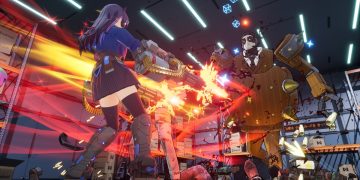
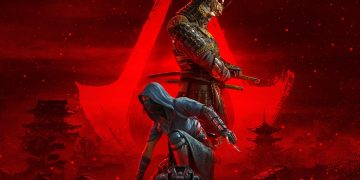
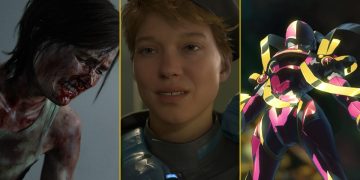
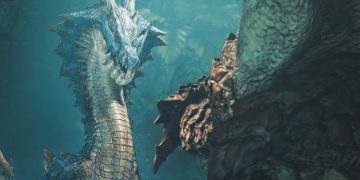



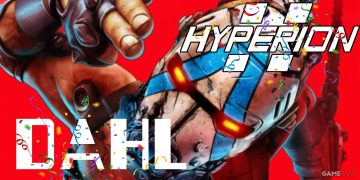
![[FREE Game] Ruffy and the Riverside Giveaway (PlayStation 5 – North America) [FREE Game] Ruffy and the Riverside Giveaway (PlayStation 5 – North America)](https://www.intergamerz.com/wp-content/uploads/2025/06/FREE-Game-Ruffy-and-the-Riverside-Giveaway-PlayStation-5-–-360x180.jpg)
